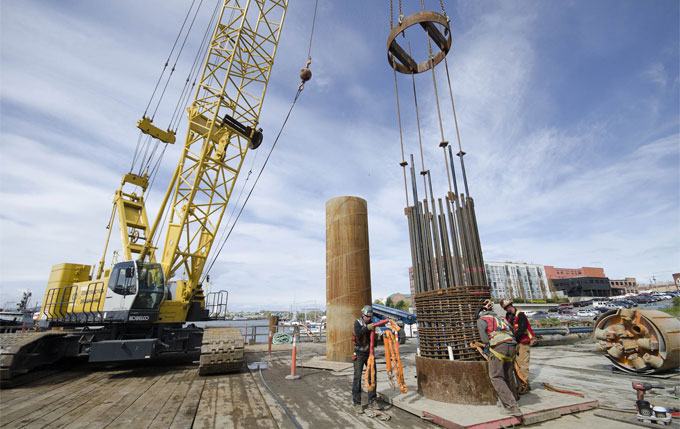
How reinforcing steel is placed for CRPR
The reinforcing steel should be arranged perfectly as it is important to CRCP performance. CRCP failures may usually occur due to inadequate reinforcement bar lapping, unconsolidated PCC around the steel, imperfect placement of the steel in the slab and severe scorching weather throughout construction.
Reinforcing steel for CRCP is arranged with the following two methods:
Manual Method: The manual method is mostly used. Under this method, the reinforcing steel is placed by hand prior to arrange PCC. As the steel is situated at mid-depth or higher in the finished slab, the reinforcing steel should be supported with small metal or plastic ?chairs? to attain this elevation prior to arrangement of PCC. These chairs should be adequately strong to retain the reinforcing steel in exact position throughout PCC placement, consolidation and finishing.
The standard placement method includes the following :-
(1) Arrangement of the transverse bars (that works only as placement aids) on chairs.
(2) Placement of the longitudinal bars on top, and then
(3) Binding the longitudinal bars to the transverse bars. Normally, they are attached or clipped to the transverse bars each 1.2 ? 1.8 m (4 ? 6 ft.)
With the help of manual method, it becomes easier to examine the placing of bar, height and lap distance. But, with regard to mechanical methods, the manual method is sluggish and more labor is required.
Mechanical Method: Reinforcing steel can also be arranged mechanically. Mechanical placement can be done in different ways, however most of them entail picking up prepositioned, but not properly spanned, reinforcing bars with a placer/spreader attachment and then retaining the bars at a preset depth when the PCC is positioned around them.
There may occur longitudinal steel placement deviations of ? 75 mm (?3 inches) in the vertical plane when tube feeders were utilized to place the steel (FHWA, 1990b[2]).
Furthermore, CRCP pavements (and JRCP pavements when they were more consistently built up) are arranged in two lifts. Initially, the bottom lift is positioned, then the reinforcing bar is placed, and after that finished with a second PCC lift.
This process is expensive since it generally needs two passes of the PCC paver. Some pavers have the capacity of setting two lifts at the same time.


